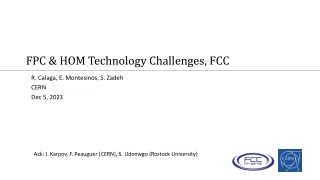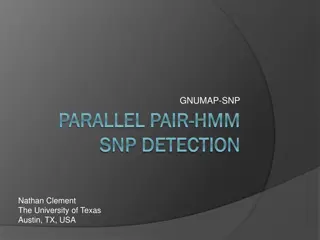
Arisaema Triphyllum: The Jack-in-the-Pulpit Flowering Plant
Arisaema triphyllum, known as the Jack-in-the-Pulpit, is a species of flowering plant in the arum family Araceae. This plant, also called Indian turnip, bog onion, and brown dragon, features small, inconspicuous flowers borne on a fleshy spike-like inflorescence enclosed by a colorful spathe. It is wide-ranging across eastern North America and has been used by Native Americans for various medicinal purposes. The plant's root can be cooked and eaten as a root vegetable, providing a peppery flavor due to calcium oxalate crystals.
Download Presentation

Please find below an Image/Link to download the presentation.
The content on the website is provided AS IS for your information and personal use only. It may not be sold, licensed, or shared on other websites without obtaining consent from the author. If you encounter any issues during the download, it is possible that the publisher has removed the file from their server.
You are allowed to download the files provided on this website for personal or commercial use, subject to the condition that they are used lawfully. All files are the property of their respective owners.
The content on the website is provided AS IS for your information and personal use only. It may not be sold, licensed, or shared on other websites without obtaining consent from the author.
E N D
Presentation Transcript
ARUM TRIPHYLLUM
Arisaema triphyllum, the Jack-in-the-pulpit, is a species of flowering plant in the arum familyAraceae. The specific name triphyllum means "three- leaved",[3]a characteristic feature of the species, which is also referred to as Indian turnip, bog onion, and brown dragon.
The small, inconspicuous flowers of Jack-in-the- pulpit are borne on a fleshy, spike- like inflorescence called a spadix ("Jack"), which is enclosed (or nearly enclosed) by a large, sometimes colorful bract called a spathe ("pulpit").
Arisaema triphyllum sensu lato is wide-ranging across eastern North America, from Nova Scotia to Manitoba in eastern Canada, and from Texas to Florida in the southern United States. It is common throughout most of its range.
If the plant is cookedit can be eaten as a root vegetable. The calcium oxalate crystals produce a peppery flavor.[48]If the plant is sliced then dried it can be eaten like potato chips or ground into a flour.[49] uses
A preparation of the root was reported to have been used by Native Americans as a treatment for sore eyes. Preparations were also made to treat rheumatism, bronchiti s, and snakebites, as well as to induce sterility.
Indian turnip. N. O. Arace . Tincture of fresh tuber or corm
Prover:Dr.Lippe Duration of action :1-2 days Miasm :Psora Termperament :nervous irritable Thermals :Chilly
AILMENTS FROM:exposure to northwest wind,singing,talking.
Sphere of action: through nervous system 1.mucous membrane 2.glandular syatem(salivary)
PATHOGENESIS 1.mm:excoriating inflammation(nose,oral cavity,tongue,fauces) 2.glandular system(salivary):salivation
GUIDING SYMPTOMS
Coryza; acrid, fluent; nostrils raw.. Acrid, ichorous discharge, excoriating inside of nose, alae, and upper lip (Ars., Cepa).
Nose feels stopped up in spite of the watery discharge (compare, Am. c., Samb., Sinap.); sneezing < at night
Constant picking at the nose until it bleeds; boring with the finger into the side of the nose. Patients pick and bore into the raw bleeding surfaces though very painful; scream with pain but keep up the boring (in diphtheria, scarlatina, typhoid).
Picks lips until they bleed; corners of the mouth sore, cracked, bleeding (with malignant tendency, Cund.); bites nails until fingers bleed.
Aphonia: complete, after exposure to northwest winds (Acon., Hep.); from singing (Arg. n., Caust., Phos., Sel.).
Clergyman's sore throat; voice hoarse, uncertain, uncontrollable, changing continually; worse from talking, speaking or singing; orators, singers, actors.
Desquamation in large flakes, a second or third time, in scarlatina.
Typhoid scarlatina, with apathy, scanty or suppressed urine; threatened uraemia. The sore mouth and nose are guiding in malignant scarlatina and diphtheria.
Brain, inflammation of. Clergyman's sore throat. Delirium. Diphtheria. Glandular swellings. Headache. Jaw-joint painful. Mouth, sore. Scarlatina. Tongue, cracked. Typhoid fever. Voice, hoarse. CLINICAL
Worse, northwest wind; lying down,singing,talking. >warmth
Useful: after Hep. and Nit. ac. in dry, hoarse, croupy cough; after Caust. and Hep. in morning hoarseness and deafness, and in scarlatina. Should not be given low or repeated often as bad effects often follow. -The higher potencies most prompt and effective.






















